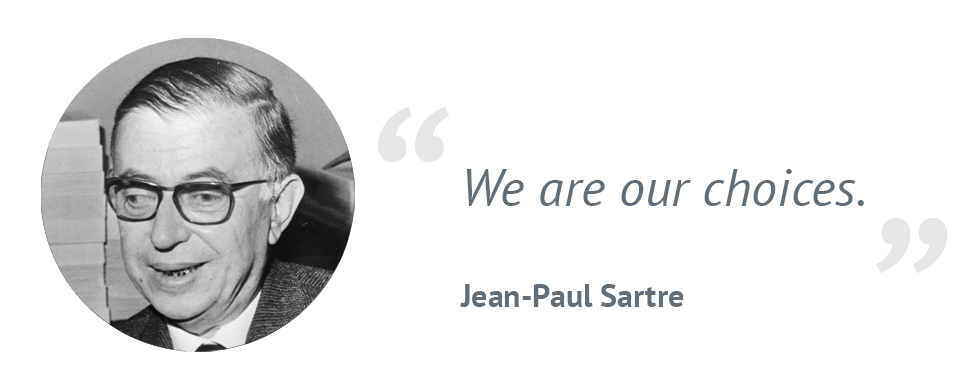
Healthcare marketing is full of excitement these days. With so many digital tools and platforms available– and new ones popping up every day– there are more ways than ever to communicate with your target audience.
As always, the challenge is to get the right message to the right people, at the right time. But the sheer number of options out there have made this more complex.
This trend will only continue as we grow more comfortable with digital interactions. In 2021, a whopping 65 percent of people claimed to communicate digitally more than in person, a number predicted only to increase!
People expect convenience, responsiveness, and, most importantly, choice. They want to communicate with businesses however and whenever they wish.
The solution, then, is to meet those expectations by opening multiple communication channels.
Emerging technologies continue to open up more communication channels than ever before. 15 years ago, the usual suspects were TV, radio, print, or in person visits. Now, an ophthalmologist with the alter ego of Dr. Glaucomflecken makes educational and satirical skits in his free time for his large fanbase on YouTube and Instagram.
We only have so much time and resources. So we need to pick the right combination of channels that generates business and satisfies our audience.
Here are some of the most popular healthcare marketing channels, along with their pros and cons.
1. Email
Email is more popular than ever. In fact, over 70 percent of U.S. adults prefer it to any other channel when communicating with businesses.
One healthcare brand that uses it well is Northwestern Medicine, which we discussed in a case study published previously on the Bloom blog. Here’s a screenshot of one of their newsletters:
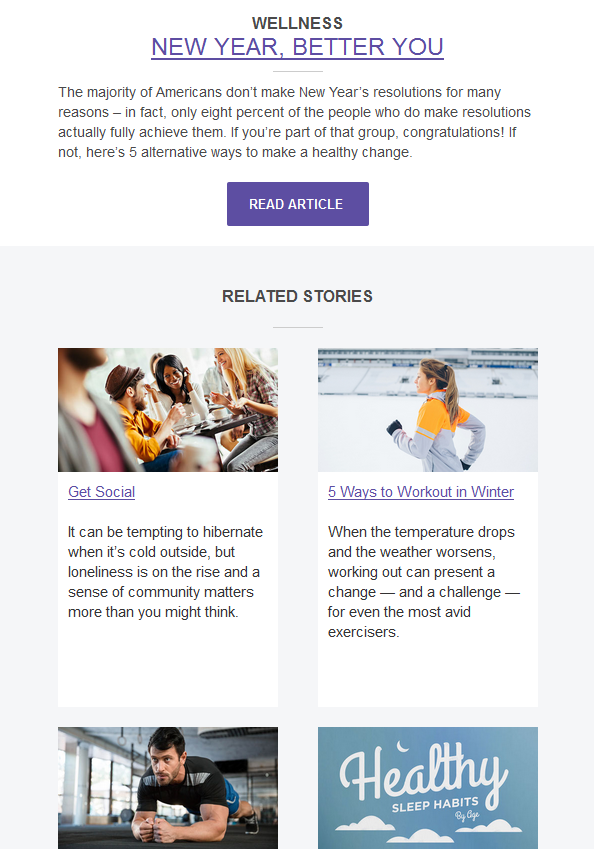
Email is great because it scales well and is easy to automate. With just a little time and effort, you can type a message and connect with everyone on your list. Recipients can also decide when they’d like to read it.
On the other hand, email lacks the personal touches of a phone call or face-to-face conversation. Also, because most of us receive so many emails daily, yours can sometimes get lost in the shuffle.
2. Social Media
There’s this impression that social media is largely for millennials and even younger generations. But middle age and even seniors are quickly catching on. Almost 30% of X (formerly known as Twitter) users are over the age of 35.
MD Anderson uses their X platform to share tips, highlight customer stories, and provide customer support.
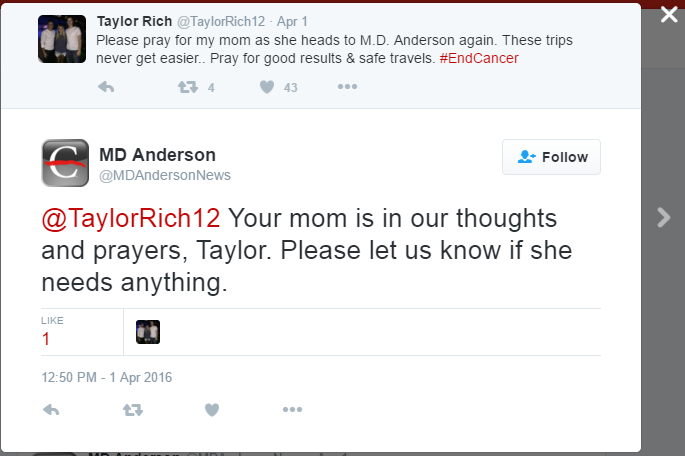
A big plus for social media is it’s incredibly versatile. You can share prevention tips to target people at the top of the funnel, support current customers, and create value for everyone in between. There’s also a community aspect; as someone bonds with you, they can also bond with others in similar health situations.
One downside: social media can be labor intensive. Followers might get upset if they see you’ve responded to someone else, but fail to respond to them right away. You have to make sure you have the staff in place to keep up.
3. Text Messages
Everyone has a smartphone these days. When your target audience isn’t using them to get online, they’re probably texting.
There’s an excellent opportunity here to create meaningful interactions. Text messages are opened a staggering 98 percent of the time– 90 percent of them within three minutes.
Here’s how a text appointment reminder might look:
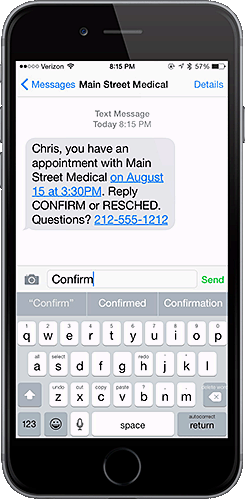
Text messages are more intrusive than emails but less intrusive than phone calls or in-person visits. They’re good because they allow people to see and/or respond whenever is convenient. Because most people text with friends and family, doing this as a business could help you stand out.
4. Live Chat
You’ve probably seen live chat already. These programs create a little chat window that pops up when you visit a website, where someone associated with the site sends a message and asks if you have any questions.
Here’s how BaylorScott&White Health does it on their website:
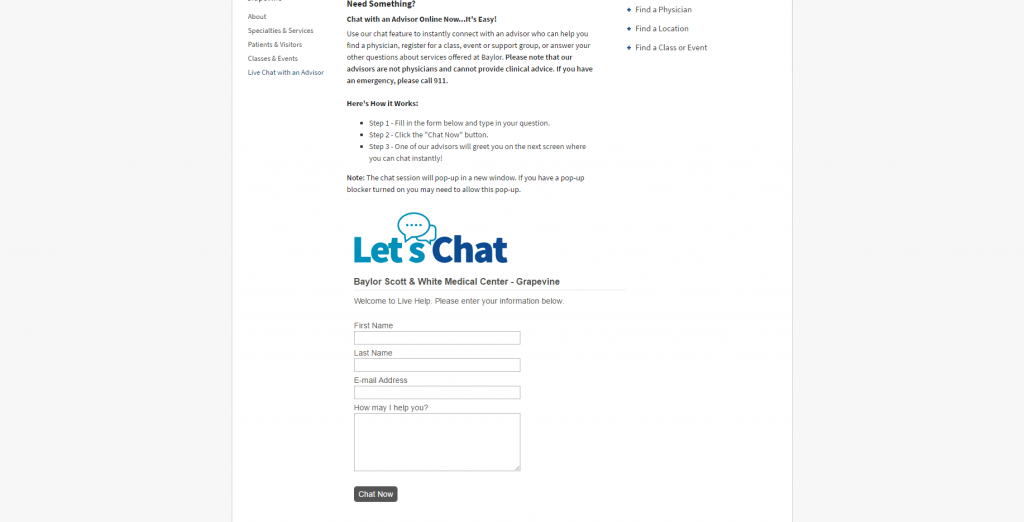
This can add a nice personal touch. It shows website visitors they haven’t landed on a static page made by a faceless company. There’s someone there– and willing to answer questions. Numerous healthcare messaging apps ensure the communications are private and comply with HIPAA requirements.
The downside is the effort involved. Someone has to always be available, whether you settle on 24/7 live chat or limit it to specific hours. Also, older demographics might not feel as comfortable with live chat as millennials.
5. More Traditional Channels (Phone, Direct Mail, TV, Print, Radio, In-Person)
All of these newer digital marketing channels might tempt you to overlook the older ones. But there’s no reason why they can’t work together.
If you’ve been using phone, direct mail or other traditional strategies with success, by all means, keep using them!
Traditional and digital channels can work together to support one another and create an even better customer experience.
Imagine you meet a pharma rep at a trade show. After telling her about your company, you leave her with a business card directing her to your website. A few weeks later, she goes to the website with a specific question in mind. Instead of going through the hassle of calling you, she can get it answered through live chat.
The best way to optimize your marketing: focus on channels your target customers are already using.
How do most of them contact you now? Where do you get most of your website visitors? It’s far easier to swim with the current than try to force the interactions to fit a different model.
Here are a couple more things to consider about your audience:
Ultimately, you have to weigh the pros and cons. Some channels (phone, live chat, etc.) are synchronous, which means both the sender and receiver of the message must be present. Other channels (email, text messages, etc.) are asynchronous, so one party can receive the message and respond whenever is best for them.
Don’t just open up more communication channels for the sake of doing so. There’s little value in that without having a CRM system that helps you follow leads across different channels. Analytics will help you measure each channel’s ROI, and see how they work together to create results.
An essential part of healthcare marketing success lies in giving your audience a choice on how to communicate with you. This makes it much easier to build long-term relationships.
Instead of confining prospects to one or two channels, why not open things up and engage them in the way they prefer? As you add more channels, you can track the results to optimize your messaging along the way.
